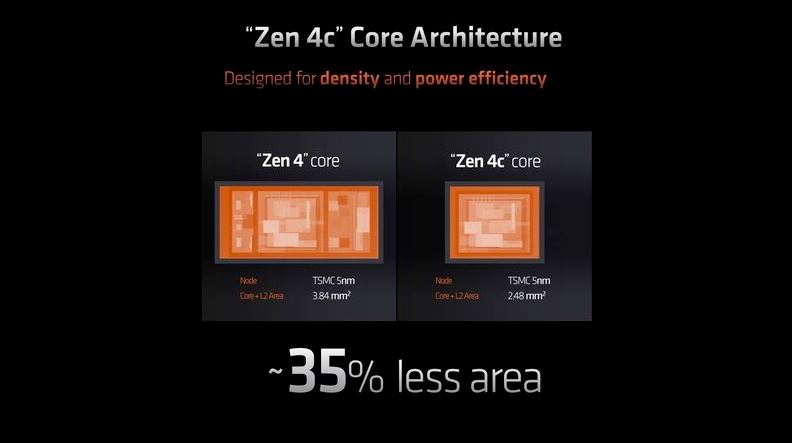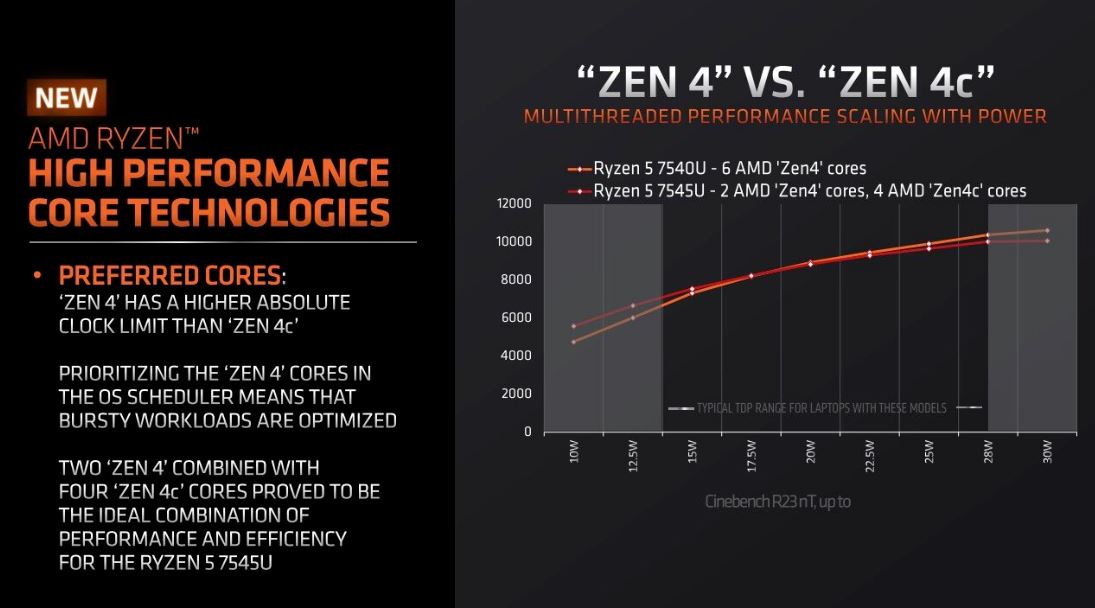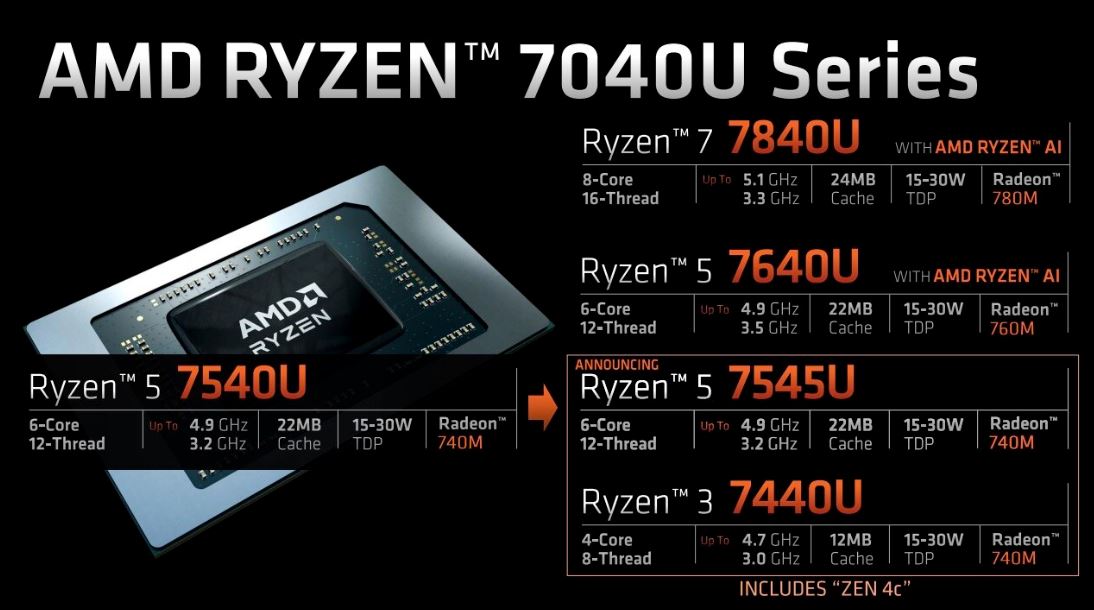AMD is formalizing the use of Zen 4c cores on its processors to provide enhanced performance for modest configurations. This marks the first time the manufacturer has employed different cores on the same processor. It was a poorly kept secret that AMD has now unveiled. The processor designer has been using two types of Zen 4 cores for a few weeks to enhance the performance of its Ryzen processors when the power envelope is below 15 W.
Cores are key!

AMD©
The use of Zen 4c cores allows AMD to achieve higher density, as Zen 4c cores occupy 35% less surface area than a traditional Zen 4 core. In the long run, this will enable AMD to fit more Zen 4c cores on a given surface area than Zen 4 cores. This reduction in footprint allows Zen 4c cores, according to AMD, to deliver better performance with lower power envelopes. However, Zen 4 cores remain more powerful beyond a 20 W envelope, notably due to their ability to reach higher frequencies. AMD is thus combining Zen 4 and Zen 4c cores to benefit from the best of both worlds and obtain more versatile processors.

AMD©
Zen 4c cores are not inferior to Zen 4 cores
AMD is keen to point out that Zen 4c cores have exactly the same characteristics as Zen 4 cores. The number of instructions per cycle (IPC) is strictly identical, the supported instruction types are the same, multithreading support is present, and it is not necessary for the operating system to assign tasks based on cores with a scheduler. AMD takes this opportunity to taunt Intel, which uses completely different E-cores and P-cores.

AMD©
The first processors to officially benefit from Zen 4c cores are the Ryzen 7545U and Ryzen 7440. The former is equipped with two Zen 4 cores and four Zen 4c cores. The latter uses a single Zen 4 core and three Zen 4c cores. Unofficially, AMD admits to already having used Zen 4c cores on the Ryzen Z1 that powers the Asus ROG Ally, although the proportions are not known.
If the use of Zen 4c cores leads to more versatile processors, particularly by offering processors with more cores for entry-level configurations, it also allows AMD to fit more cores on the same surface area, thus reducing costs. Hopefully, with these Zen 4c cores, AMD will finally be able to meet the demand for its APUs, which are currently scarce in the market.





